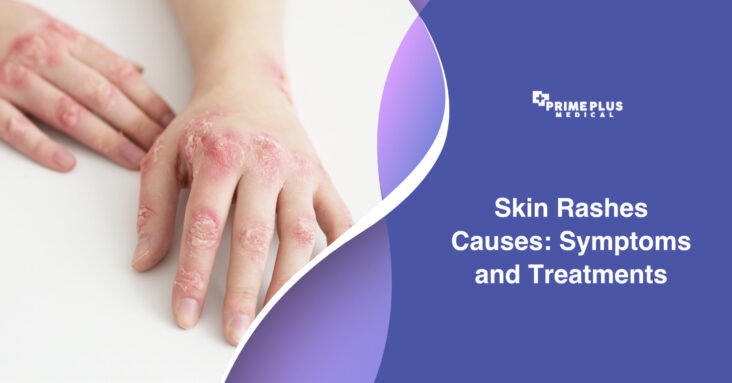Skin rashes are common conditions that can affect anyone, regardless of their age or gender. These conditions occur when the skin is inflamed, irritated, or infected by bacteria, viruses, or allergens. Skin rashes can be mild or severe, and they can cause discomfort, pain, and embarrassment. In this article, we will discuss the causes of skin rashes, their symptoms, and the available treatments.
Causes of Skin Rashes
Skin rashes can have various causes, including:
- Allergies: Allergies to certain foods, medications, or environmental factors such as pollen, pet dander, or dust mites can cause skin rashes.
- Infections: Bacterial, viral, or fungal infections can cause skin rashes, including chickenpox, shingles, impetigo, ringworm, and athlete’s foot.
- Insect bites: Insect bites from mosquitoes, ticks, fleas, or bed bugs can cause skin rashes, such as hives or redness and swelling.
- Autoimmune diseases: Autoimmune diseases, such as lupus or psoriasis, can cause skin rashes due to an overactive immune system attacking healthy skin cells.
- Stress: Stress can trigger or worsen skin rashes, especially conditions like eczema or psoriasis.
- Heat and sweat: Heat and sweat can cause skin rashes, such as heat rash or prickly heat, especially during hot and humid weather.
Most common Skin Rashes
Skin rashes are a common problem that affects people of all ages. These rashes can be caused by a variety of factors, including allergies, infections, and skin conditions. Here are some of the most common skin rashes:
- Eczema – also known as atopic dermatitis, this condition causes dry, itchy patches on the skin.
- Psoriasis – a chronic skin condition that causes red, scaly patches on the skin.
- Hives – a rash of raised, itchy bumps that can appear anywhere on the body.
- Contact dermatitis – a rash that occurs when the skin comes into contact with an irritant or allergen.
- Rosacea – a chronic skin condition that causes redness and flushing of the face.
read more Gonorrhea Symptoms: You Should Know
Symptoms of Skin Rashes
The symptoms of skin rashes can vary depending on the cause and severity of the condition. Some common symptoms include:
- Redness and inflammation: Skin rashes often cause redness, inflammation, and itching on the affected area.
- Bumps or blisters: Some skin rashes can cause bumps, blisters, or small, fluid-filled sacs that can break open and crust over.
- Scaling and peeling: Some skin rashes can cause scaling, flaking, or peeling of the skin, especially on the scalp, face, or hands.
- Pain and discomfort: Some skin rashes can cause pain, burning, or stinging sensations, especially when the skin is touched or exposed to hot or cold temperatures.
- Fever and chills: In some cases, skin rashes can cause fever, chills, and other flu-like symptoms, especially when the cause is an infection.
Treatments for Skin Rashes
The treatment for skin rashes depends on the cause and severity of the condition. Some common treatments include:
- Topical creams and ointments: Topical creams and ointments, such as corticosteroids, antifungal creams, or antihistamines, can help reduce inflammation, itching, and redness caused by skin rashes.
- Oral medications: In some cases, oral medications, such as antibiotics, antivirals, or antifungals, may be prescribed to treat skin rashes caused by infections.
- Lifestyle changes: Lifestyle changes, such as avoiding triggers that cause skin rashes, wearing loose clothing, and using mild, fragrance-free soaps and detergents, can help prevent and manage skin rashes.
- Home remedies: Some home remedies, such as applying cool compresses, taking oatmeal baths, or using aloe vera gel, can help soothe and reduce the symptoms of skin rashes.
- Medical procedures: In severe cases, medical procedures, such as phototherapy, laser therapy, or surgical removal of the affected skin, may be recommended to treat skin rashes.
read more Scientists Found a New Vaccine for Malaria: Here Are the Things You Need to Know
Preventing Skin Rashes
While it may not be possible to prevent all skin rashes, there are some steps that you can take to reduce your risk of developing a rash:
- Avoid irritants: If you know that you are sensitive to certain substances, such as chemicals or fragrances, avoid them whenever possible.
- Keep your skin clean and dry: Keeping your skin clean and dry can help to prevent fungal infections and other types of skin rashes.
- Wear protective clothing: If you are going to be exposed to irritants, wear protective clothing, such as gloves or long sleeves.
- Use sunscreen: Sunscreen can help to prevent sunburn and reduce your risk of developing a rash caused by sun exposure.
When to See a Doctor?
Most skin rashes are harmless. Even so, some skin rashes can indicate a severe illness. Therefore, you need to see a doctor if a rash appears on your skin, especially if you are unsure what caused it. The goal is to prevent complications or transmission.
If you’re experiencing persistent skin rashes that won’t heal, come directly to Prime Plus Medical where our English-speaking doctors can effectively treat your condition. Don’t hesitate to contact us at +62812 3738 7131 or email us at [email protected] for immediate assistance.
Our clinic offers top-quality medical care and personalized treatment plans to help you regain healthy, glowing skin. Trust our team of experienced professionals to diagnose and cure your skin problems. With Prime Plus Medical, you can rest assured that you’ll receive the best care possible. So why wait? Visit us now and experience a healthier, happier you.

